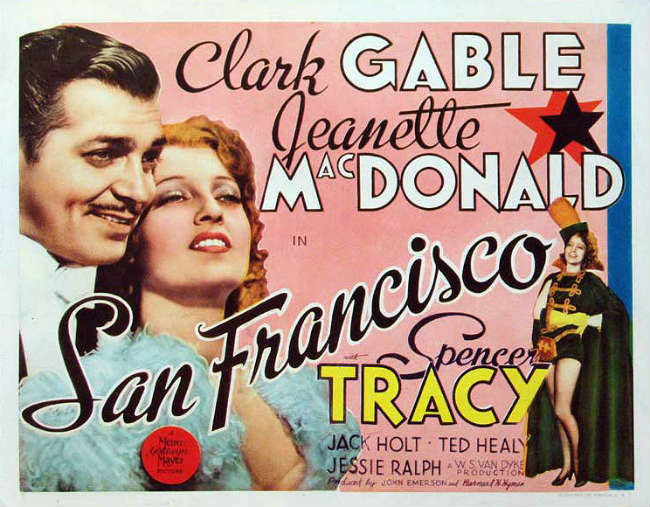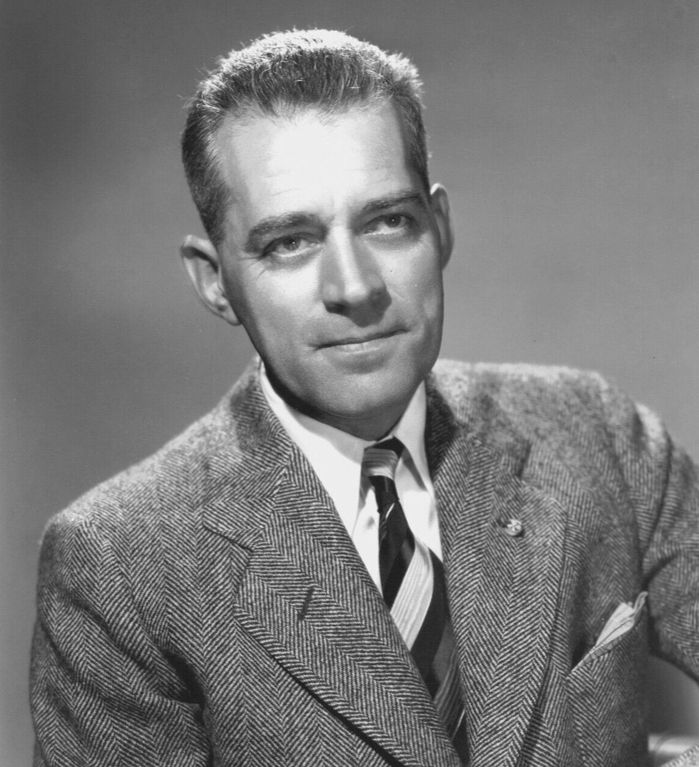San Francisco (1936)
- Soames Inscker

- Nov 1
- 4 min read

The 1936 MGM epic San Francisco stands as one of Hollywood’s grandest and most stirring melodramas of the 1930s, blending romance, music, and disaster spectacle in a way that would become a studio hallmark. Directed by W. S. Van Dyke — one of Metro-Goldwyn-Mayer’s most dependable and prolific craftsmen — and starring Clark Gable, Jeanette MacDonald, and Spencer Tracy, the film is both a nostalgic love letter to the titular city and an exploration of human resilience in the face of catastrophe.
Set against the backdrop of the infamous 1906 San Francisco earthquake, the film tells the story of Blackie Norton (Clark Gable), a charming but rough nightclub owner whose saloon, the Paradise Club, sits on the infamous Barbary Coast. Into his world steps Mary Blake (Jeanette MacDonald), a classically trained singer newly arrived from Colorado, whose talent quickly captivates both the rough crowds of the Barbary Coast and the more refined audiences of Nob Hill.
Blackie, enamoured by Mary’s voice and spirit, hires her to perform in his club — but soon she attracts the attention of the more cultured Jack Burley (Jack Holt), who offers her an opportunity to sing in the opera house and escape the debauchery of Blackie’s world. Torn between the moral uprightness of Burley’s society and the passionate, streetwise affection of Blackie, Mary’s loyalties — and heart — are tested.
As the narrative unfolds, the characters’ personal struggles are suddenly dwarfed by the cataclysmic earthquake that devastates San Francisco, transforming the film’s romantic melodrama into a gripping disaster spectacle and, ultimately, a hymn to human endurance.
Clark Gable, already at the height of his fame following It Happened One Night (1934), brings his characteristic charisma and swagger to Blackie Norton. He perfectly captures the contradictions of a man whose cynicism masks a fiercely loyal and generous heart. His performance is particularly notable in the later scenes, where his bravado gives way to anguish and moral awakening amidst the ruins.
Jeanette MacDonald, the operatic star of many MGM musicals, provides a luminous counterpoint. Her role as Mary Blake is one of her finest, combining vocal elegance with genuine emotional sincerity. Her rendition of the patriotic song “San Francisco” became so iconic that it was later adopted as an unofficial anthem of the city itself.

Spencer Tracy, in one of his early notable roles, gives a quietly powerful performance as Father Tim Mullin, Blackie’s boyhood friend and moral conscience. His scenes with Gable provide the film’s emotional and philosophical backbone, pitting faith and morality against the cynicism and ambition of Blackie’s world. Tracy’s natural warmth and understated gravitas earned him an Academy Award nomination for Best Actor — the first of nine such nominations in his career.
W. S. Van Dyke, nicknamed “One-Take Woody” for his efficient shooting style, brings energy and precision to a film that could easily have become unwieldy in lesser hands. The pacing never drags; the film moves seamlessly from intimate character scenes to grand set-pieces, culminating in one of the most spectacular disaster sequences of the 1930s.
The earthquake scenes remain astonishing even by modern standards. MGM’s technical departments employed elaborate miniatures, mechanical sets, and groundbreaking sound effects to recreate the devastation. The result is both thrilling and horrifying — a vivid recreation of destruction that was unmatched until the advent of widescreen spectacle decades later.
Cinematographer Oliver T. Marsh captures the contrasting worlds of the story — from the smoky, decadent glow of the Barbary Coast to the elegance of the opera house — in richly detailed black-and-white photography. Cedric Gibbons’ art direction, as always with MGM, is first-rate, and the production values throughout the film exude the polished grandeur that defined the studio’s golden age.
At its core, San Francisco is not just a romance or a disaster film, but a moral parable. It explores redemption, faith, and the indomitable human spirit. Blackie’s journey from cynical opportunist to compassionate survivor mirrors the city’s own rebirth from the ashes.

The film’s final scenes, set amidst the smoking ruins of the city, carry an almost spiritual power. The survivors, led by Father Mullin, march together singing “Nearer, My God, to Thee” — a scene that evokes both religious hope and patriotic resilience. For 1930s audiences, emerging from the Great Depression and on the brink of global unrest, this message of perseverance resonated deeply.
San Francisco was a major success upon its release, both critically and commercially. It was one of MGM’s highest-grossing films of 1936 and earned six Academy Award nominations, including Best Picture, Best Director, and Best Actor for Spencer Tracy. It won the Oscar for Best Sound Recording — a fitting accolade given the film’s pioneering use of sound effects during the earthquake scenes.
The film’s title song, “San Francisco,” composed by Bronislau Kaper and Walter Jurmann with lyrics by Gus Kahn, became an enduring part of American popular culture. Jeanette MacDonald’s performance of it would later be played at civic events and celebrations in the city for decades to come.
In retrospect, San Francisco stands as one of the quintessential examples of MGM’s studio craftsmanship at its peak — a film that combines star power, technical innovation, and genuine emotional depth. While its melodramatic tendencies and moralising tone may seem old-fashioned to modern viewers, its sincerity and spectacle ensure its continued appeal.
San Francisco (1936) endures as both a rousing piece of classic Hollywood entertainment and a deeply human story of love, loss, and redemption. The performances of Gable, MacDonald, and Tracy elevate the film far beyond mere spectacle, while Van Dyke’s direction ensures that its grand set-pieces never overshadow its emotional core.
As the survivors march through the ruined streets singing of their city’s rebirth, one feels not just the triumph of San Francisco, but of the cinema itself — an art form capable of turning disaster into poetry and devastation into hope.
In every sense, San Francisco remains a shining example of Hollywood’s golden age — heartfelt, grand, and unforgettable.






